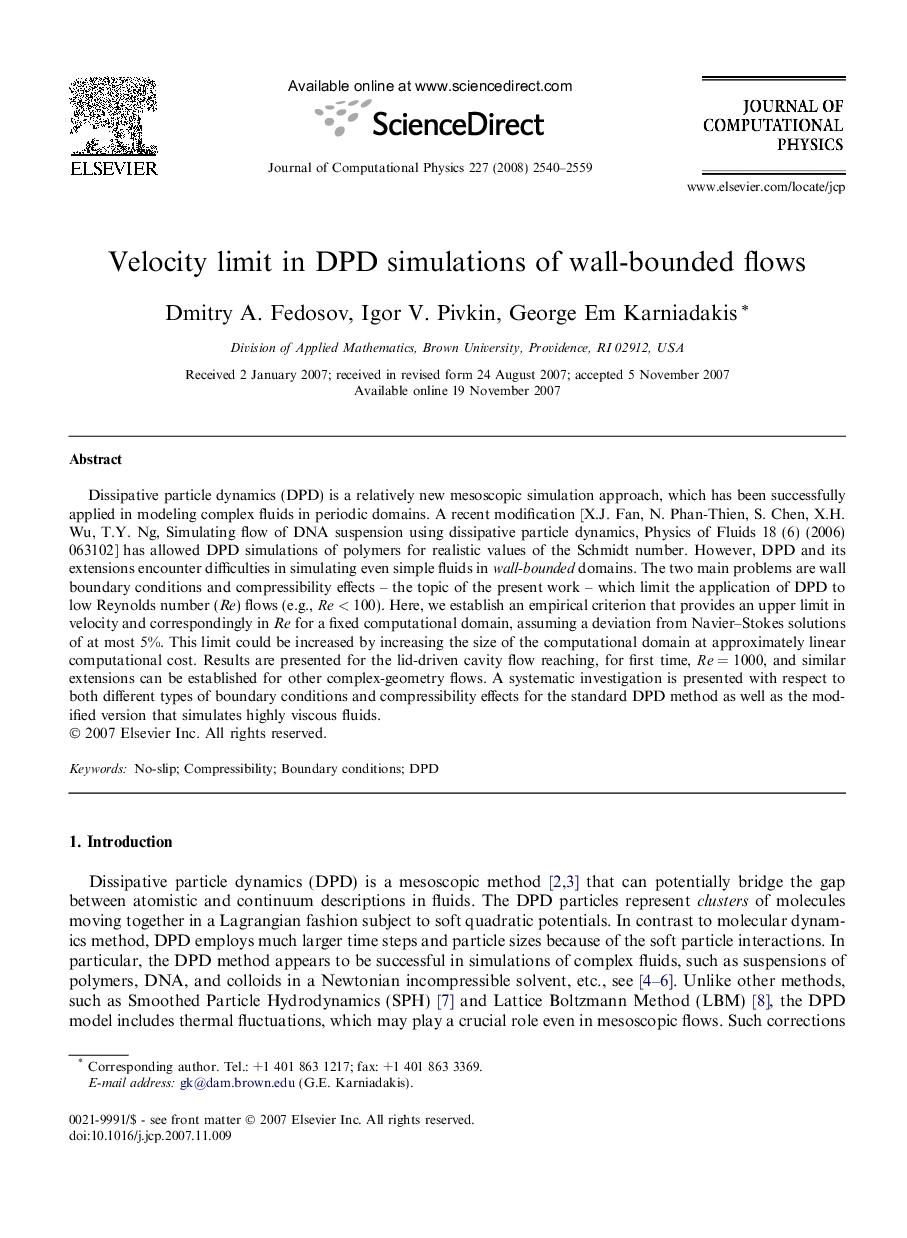| Article ID | Journal | Published Year | Pages | File Type |
|---|---|---|---|---|
| 522193 | Journal of Computational Physics | 2008 | 20 Pages |
Dissipative particle dynamics (DPD) is a relatively new mesoscopic simulation approach, which has been successfully applied in modeling complex fluids in periodic domains. A recent modification [X.J. Fan, N. Phan-Thien, S. Chen, X.H. Wu, T.Y. Ng, Simulating flow of DNA suspension using dissipative particle dynamics, Physics of Fluids 18 (6) (2006) 063102] has allowed DPD simulations of polymers for realistic values of the Schmidt number. However, DPD and its extensions encounter difficulties in simulating even simple fluids in wall-bounded domains. The two main problems are wall boundary conditions and compressibility effects – the topic of the present work – which limit the application of DPD to low Reynolds number (Re ) flows (e.g., Re<100Re<100). Here, we establish an empirical criterion that provides an upper limit in velocity and correspondingly in Re for a fixed computational domain, assuming a deviation from Navier–Stokes solutions of at most 5%. This limit could be increased by increasing the size of the computational domain at approximately linear computational cost. Results are presented for the lid-driven cavity flow reaching, for first time, Re=1000Re=1000, and similar extensions can be established for other complex-geometry flows. A systematic investigation is presented with respect to both different types of boundary conditions and compressibility effects for the standard DPD method as well as the modified version that simulates highly viscous fluids.
